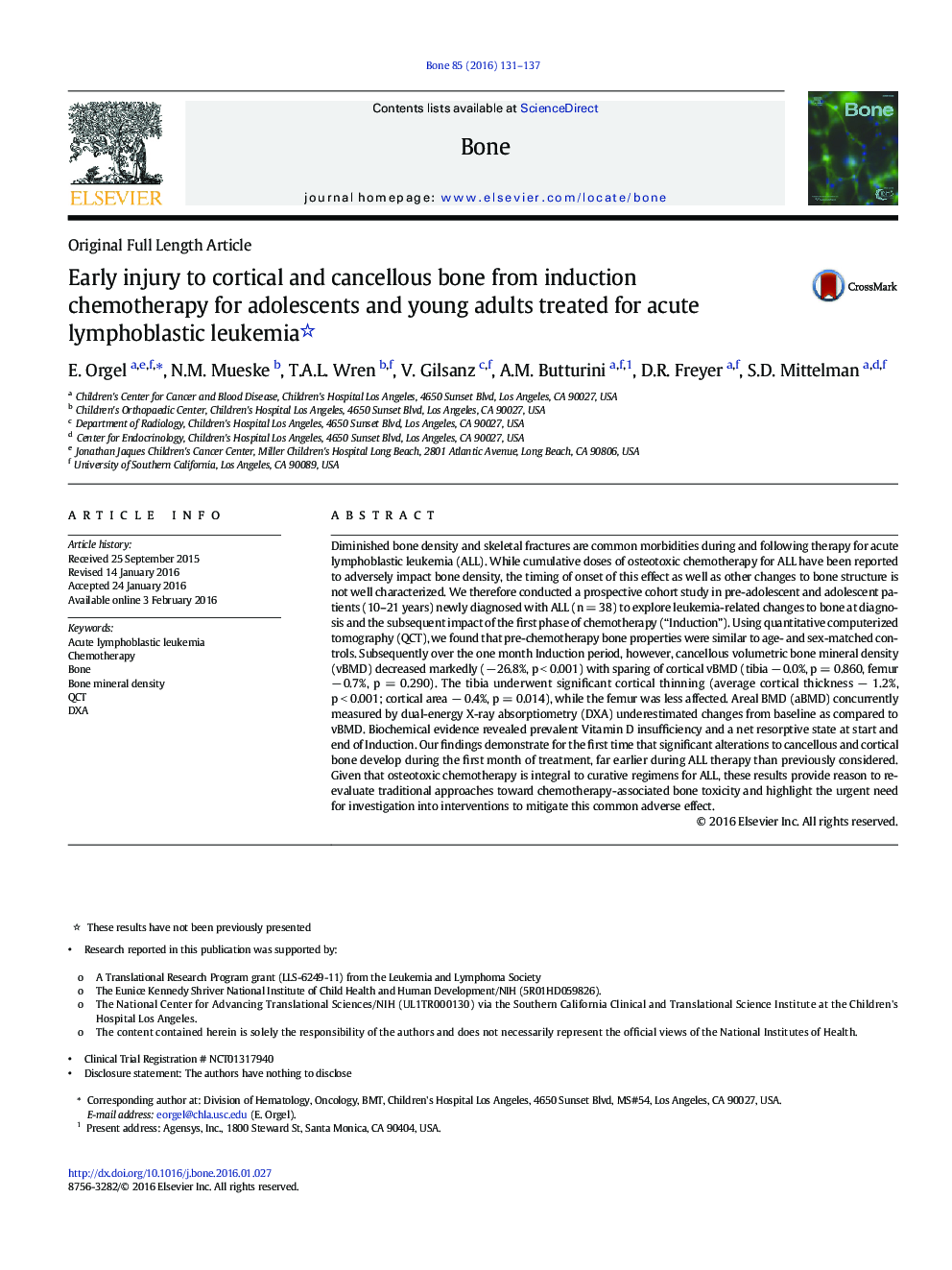| کد مقاله | کد نشریه | سال انتشار | مقاله انگلیسی | نسخه تمام متن |
|---|---|---|---|---|
| 2779135 | 1568134 | 2016 | 7 صفحه PDF | دانلود رایگان |
• Newly diagnosed ALL does not significantly affect bone density and structure as compared to a healthy cohort of children.
• Osteotoxic chemotherapy for childhood ALL significantly affects bone health during the initial month of chemotherapy alone.
• DXA underestimates specific aspects of osteotoxicity as compared to QCT.
• Further research is necessary to delineate the clinical role of qCT in monitoring changes to bone during ALL chemotherapy.
Diminished bone density and skeletal fractures are common morbidities during and following therapy for acute lymphoblastic leukemia (ALL). While cumulative doses of osteotoxic chemotherapy for ALL have been reported to adversely impact bone density, the timing of onset of this effect as well as other changes to bone structure is not well characterized. We therefore conducted a prospective cohort study in pre-adolescent and adolescent patients (10–21 years) newly diagnosed with ALL (n = 38) to explore leukemia-related changes to bone at diagnosis and the subsequent impact of the first phase of chemotherapy (“Induction”). Using quantitative computerized tomography (QCT), we found that pre-chemotherapy bone properties were similar to age- and sex-matched controls. Subsequently over the one month Induction period, however, cancellous volumetric bone mineral density (vBMD) decreased markedly (− 26.8%, p < 0.001) with sparing of cortical vBMD (tibia − 0.0%, p = 0.860, femur − 0.7%, p = 0.290). The tibia underwent significant cortical thinning (average cortical thickness − 1.2%, p < 0.001; cortical area − 0.4%, p = 0.014), while the femur was less affected. Areal BMD (aBMD) concurrently measured by dual-energy X-ray absorptiometry (DXA) underestimated changes from baseline as compared to vBMD. Biochemical evidence revealed prevalent Vitamin D insufficiency and a net resorptive state at start and end of Induction. Our findings demonstrate for the first time that significant alterations to cancellous and cortical bone develop during the first month of treatment, far earlier during ALL therapy than previously considered. Given that osteotoxic chemotherapy is integral to curative regimens for ALL, these results provide reason to re-evaluate traditional approaches toward chemotherapy-associated bone toxicity and highlight the urgent need for investigation into interventions to mitigate this common adverse effect.
Journal: Bone - Volume 85, April 2016, Pages 131–137
